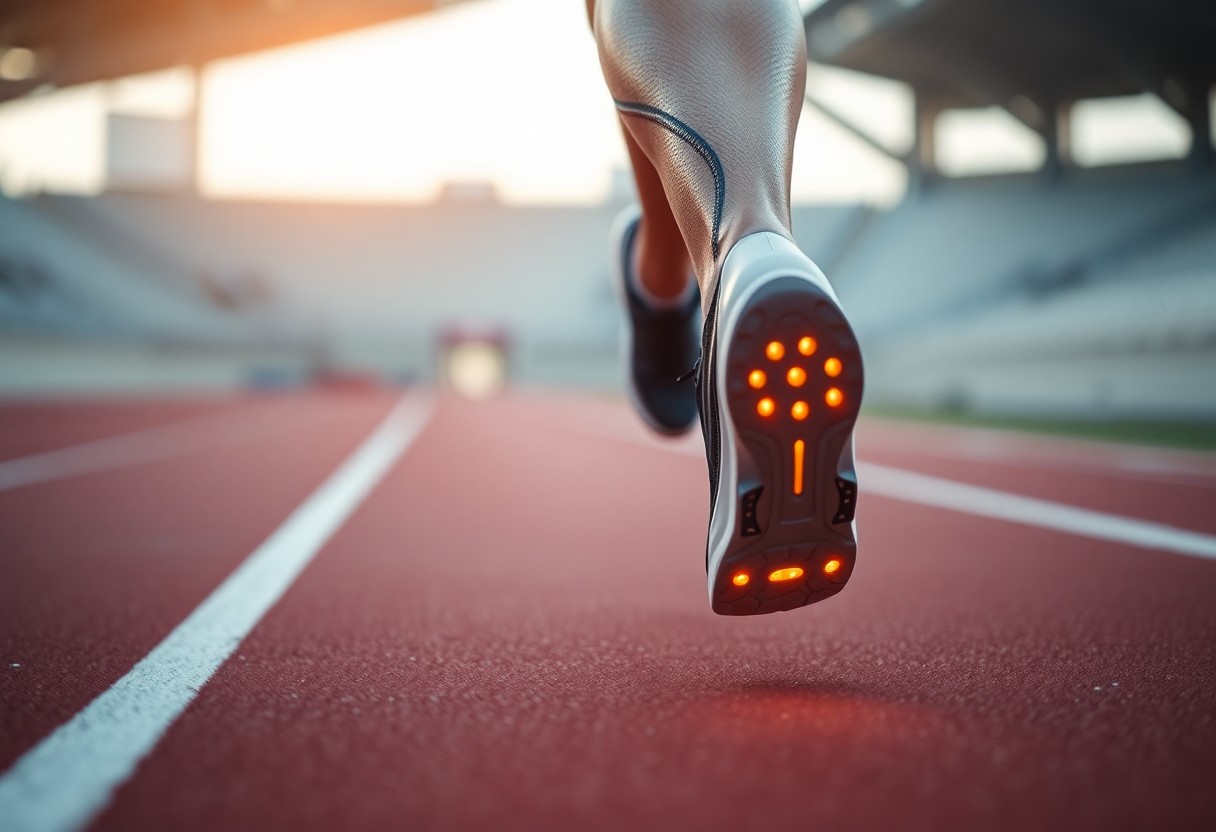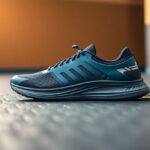
Explore the groundbreaking advancements in running footwear technology, which have significantly transformed the landscape of performance optimisation for endurance athletes. These innovations are not just minor enhancements; they embody substantial breakthroughs that can revolutionise your running experience and strategy.
The realm of performance optimisation in endurance running has been significantly impacted by advanced footwear technology, offering extraordinary opportunities to enhance your athletic potential. You will discover how cutting-edge shoe designs can dramatically reduce your metabolic expenditure while improving running economy. By incorporating carbon fibre plates and revolutionary midsole materials, these innovative footwear options provide exceptional energy return mechanisms that may lower your oxygen consumption by up to 4%. Whether you are a competitive runner or a dedicated amateur, understanding these biomechanical advancements equips you to make informed decisions about your running gear and potentially improve your race performance.
 Continue reading to delve deeper into the complexities of running footwear that promise to elevate your performance:
Continue reading to delve deeper into the complexities of running footwear that promise to elevate your performance:
Unlocking Maximum Energy Return: Understanding the Science Behind Advanced Running Shoes
The technology utilized in advanced running shoes is based on intricate biomechanical principles designed to optimise energy transfer throughout the running motion. Innovative design elements work in concert to reduce metabolic expenditure, forming a sophisticated system that boosts running efficiency through strategic material engineering and optimised geometric designs. By focusing on the mechanics of energy return, these shoes provide runners with a significant edge in both performance and stamina, enabling longer runs with reduced fatigue.
Diving into the Curvature Dynamics of Carbon Fibre Plates
Carbon fibre plates are engineered with precise geometric specifications to efficiently redirect kinetic energy during the running cycle. Optimal curvature angles between 12° and 15° facilitate maximum energy storage and return, with finite element modelling demonstrating an impressive energy return efficiency of up to 93% in prototype designs. These carefully crafted plates create a spring-like effect that decreases muscular fatigue during the toe-off phase, allowing runners to conserve energy over longer distances, ultimately enhancing both endurance and overall performance.
Comparing Innovations in TPU and EVA Midsoles for Enhanced Performance
Material selection is crucial in determining the performance of running shoes, with thermoplastic polyurethane (TPU) emerging as a superior midsole technology. Comparative studies highlight TPU’s significant advantages in energy return and impact absorption, empowering runners with enhanced biomechanical efficiency across various running conditions. The choice between TPU and EVA foam is critical for athletes aiming to fine-tune their performance while minimising injury risks during both training and competition.
| Energy Return | 18% higher with TPU |
| Oxygen Consumption Reduction | 2.4% lower with TPU |
A thorough investigation into midsole materials reveals complex performance characteristics. TPU exhibits exceptional resilience compared to traditional EVA foam, maintaining consistent mechanical properties over thousands of compression cycles. Runners benefit from reliable energy return, reduced fatigue, and improved performance over long distances through advancements in material science, which can dramatically affect their overall training outcomes and competitive success.
| Impact Absorption | TPU absorbs 37% more force |
| Rebound Elasticity | 89% maintained over 50,000 cycles |
 Continue exploring as we examine the effects of advanced footwear technology on metabolic efficiency:
Continue exploring as we examine the effects of advanced footwear technology on metabolic efficiency:
Assessing Metabolic Efficiency: Understanding Who Benefits Most from Advanced Footwear
Advanced footwear technology does not offer uniform benefits for all runners. Gains in metabolic efficiency can vary significantly across diverse demographic groups, with factors such as gender, age, and individual biomechanics playing essential roles in performance enhancement. Researchers have uncovered nuanced patterns of metabolic response, showing that the advantages of super shoes extend beyond simple performance metrics to include complex physiological adaptations unique to each runner’s biomechanical profile.
Exploring Gender-Specific Performance Enhancements
Female runners demonstrate a 3.2% improvement in metabolic power, while males see a 4.2% enhancement, indicating complex neuromuscular adaptations. Data on pelvic kinematics reveals a 14% greater reduction in hip adduction angle for females using advanced footwear, which may help explain the subtle differences in metabolic gains between genders. Understanding these variations can assist in tailoring training programs and footwear choices to maximise performance benefits for both genders.
Unraveling Age-Related Advantages in Endurance Performance
Masters athletes over the age of 40 exhibit a 2.8% greater reduction in oxygen cost when wearing super shoes, likely compensating for decreased tendon elasticity. Tibial loading analysis indicates a 12% cumulative stress reduction per kilometre for older runners, suggesting considerable advantages for both injury prevention and performance maintenance. These findings highlight the importance of advanced footwear technology in prolonging the competitive longevity of older athletes.
The benefits of advanced footwear technology for older runners extend well beyond basic performance metrics. Biomechanical studies indicate that older runners experience more significant adaptations due to compensatory mechanisms. Reduced tendon stiffness and altered muscle recruitment patterns interact with shoe technology to create a distinct performance enhancement profile. Specifically, the energy return mechanism provided by carbon plates appears to counteract age-related biomechanical inefficiencies, potentially extending competitive running careers by alleviating the physiological limitations typically encountered by aging athletes.
Continue reading to discover more about the implications of advanced footwear technology on injury risks:
Understanding the Impact of Running Footwear on Injury Risk
Advanced footwear technology introduces intricate biomechanical interactions that warrant a comprehensive analysis of potential injury risks. Runners must carefully weigh the trade-offs between performance enhancement and physiological adaptation. Longitudinal studies reveal subtle yet significant changes in muscular recruitment patterns, joint loading, and proprioceptive feedback when transitioning to high-performance running shoes, underscoring the need for a balanced training and recovery strategy.
Injury Analysis: The Costs of Enhanced Performance
Biomechanical research highlights a 9% increase in strain rates on the Achilles tendon among users of super shoes during high-intensity training. Plantar pressure mapping indicates a 22% increase in loading on the forefoot compared to traditional trainers, particularly on challenging terrains like downhill running. These findings suggest that while metabolic efficiency may improve, runners should implement targeted strength and adaptation protocols to mitigate potential injury risks and ensure long-term athletic health.
Adjusting Training Protocols for Optimal Gait Adaptations
Your biomechanical response to advanced footwear demands strategic modifications in your training regimen. Gait retraining is crucial to optimise the unique energy return mechanisms inherent in carbon-plated shoes. Runners must focus on developing neuromuscular patterns that align with the biomechanical characteristics of their shoes, potentially lowering injury risks while maximising performance benefits.
Comprehensive gait adaptation strategies include multifaceted approaches to effectively integrate advanced footwear technology. Biomechanical assessments reveal that runners require approximately 6–8 weeks of progressive training to fully adapt to the distinctive mechanical properties of super shoes. This acclimation period involves targeted eccentric strengthening protocols, adjusted interval training techniques, and careful monitoring of lower limb biomechanics. Professional athletes and serious runners benefit significantly from periodic 3D gait analysis to track subtle shifts in movement patterns, ensuring optimal alignment of advanced footwear technology with individual biomechanical characteristics.
 Discover the future of footwear technology and its implications for runners:
Discover the future of footwear technology and its implications for runners:
Uncovering Future Innovations in Running Footwear Technology
Emerging technologies are poised to redefine running shoe design, pushing the boundaries of biomechanical efficiency and performance optimisation. Cutting-edge research focuses on personalised solutions that adapt to individual biomechanics, utilising advanced materials, computational modelling, and integrated sensor technologies to create a new generation of intelligent footwear designed for elite athletes.
Revolutionising Footwear Design with 3D Printed Midsoles
Optimisation algorithms for lattice structures now enable precise variations in stiffness that correspond to individual foot pressure maps. Prototype testing has shown an additional 5.1% in metabolic savings compared to standard mass-produced models, with computational design facilitating unprecedented customisation of midsole geometries to enhance energy return and minimise biomechanical stress. This innovative approach guarantees that each runner achieves optimal performance tailored to their unique physical attributes.
Integrating Smart Technology for Enhanced Performance Monitoring
Emerging sensor technologies are transforming running shoes into sophisticated performance tracking devices. Real-time ground reaction force feedback systems can lead to a 1.9% reduction in oxygen costs through micro-adjustments in cadence, providing runners with immediate biomechanical insights during both training and competition. These advancements are essential for athletes aiming to refine their techniques and improve performance metrics.
The integration of advanced sensors marks a groundbreaking leap in performance monitoring technology. Multi-axis accelerometers, pressure-sensitive matrices, and embedded microprocessors now capture intricate biomechanical data with unparalleled precision. These intelligent systems evaluate gait mechanics, impact forces, and energy expenditure in real time, offering runners detailed insights into their movement patterns. Machine learning algorithms can predict potential injury risks, optimise training loads, and recommend personalised technique modifications based on comprehensive movement analysis, transforming running shoes from passive gear into active performance optimisation tools.
Finally, gain a thorough understanding of the transformative landscape shaped by advanced footwear technology in endurance running:
Embracing the Future of Advanced Footwear Technology in Running
In conclusion, you have delved into the transformative landscape of advanced footwear technology in endurance running. Your knowledge now encompasses how innovative design features such as carbon plates and high-performance midsole materials can drastically lower metabolic costs and enhance running efficiency. By leveraging scientific insights, you can appreciate that these shoes offer more than marginal improvements—they represent a significant shift in athletic performance. Your investment in such technology may lead to enhanced running economy, decreased energy expenditure, and optimised biomechanical responses across a variety of athletic demographics.
The Article Biomechanical Efficiency of Advanced Footwear Technology: Metabolic Cost Reduction and Performance Enhancement in Endurance Running appeared first on My Shoes Finder.
The Article Biomechanical Efficiency in Advanced Footwear for Runners Was Found On https://limitsofstrategy.com
The Article Biomechanical Efficiency: Advanced Footwear for Runners First Appeared ON
: https://ad4sc.com






No responses yet